CFMoto ZForce 500 EX: Everything you need to know about the UTV
CFMoto Nepal has expanded its market leadership by introducing the all-new ZForce 500 EX Utility Terrain Vehicle (UTV) in the Nepali market. Priced at Rs 1,425,000, the ZForce 500 EX meets a variety of work and recreational needs. CFMoto says the ZForce 500 EX can be adapted for use in different environments. From border patrolling to agriculture farming and adventure tourism, the versatile CFMoto ZForce 500 EX can unlock an abundance of potential.
The CFMoto ZForce 500 EX is powered by a 495cc single-cylinder, liquid-cooled, 4-stroke, FI engine mated to a CVT gearbox. The lightweight EFI engine delivers 37 bhp at 6,000 RPM and 43 Nm of torque at 5,800 RPM. It comes with a switchable 2WD/4WD drivetrain and an electronic power steering. The off-road buggy measures 2,870mm in length, 1,510mm in width, and 1,830mm in height. The wheelbase stands at 2,040mm while minimum ground clearance is 287mm, which is enough to cross a 25-degree slope. It also comes with a Roll-Over Protection System (ROPS) certified cage. CFMoto claims a top speed of 97 km/h.
Suspension duties are handled by Double A-arm, independent air-shock suspensions at both ends, which sit on 25-inch CST off-road tires. The minimum turning diameter is 9.5m while the kerb weight stands at 552 kg. The ZForce 500 EX fuel tank capacity is 27 liters and maximum payload capacity is 305 kg. There’s also a multi-function digital dash, front and rear steel bumpers, projector-beam headlights, cargo and side nets, multiple storage locations, and a 3,000-lb winch. Braking duties are carried out by hydraulic disc brakes on all four wheels.
The CFMoto ZForce 500 EX comes in two colors: Pearl Black and Ferrari Red. The UTV is available in the company’s dealership in Naxal, Kathmandu. More information about the ZForce 500 EX can be found online at www.cfmoto.com.np
Features:
- High-performance CVTech drive and driven clutches
- 50” trail stance
- Front & rear stainless steel bumpers
- CFMOTO 14” alloy wheels
- Compression and rebound adjustable shocks
- Cargo & side nets
- Tilt steering wheel
- 11.2” ground clearance
- Multiple storage locations
- 3000 lb winch
- Multi-function digital dash
- Four wheel hydraulic disc brakes
- Mechanical parking brake
- ROPS Certified Cage
Nepal’s auto dealers gearing up for digitisation
In response to the current scenario when social distancing and contactless service is the new normal, auto dealers in the country are gearing up to roll out their online vehicle sales platforms to cater to the new-age consumers. These platforms will allow prospective customers to browse and explore vehicles, view suitable financing options, book test-drives, and so on. Here is a short selection of the available online sales platforms:
Tata Motors Nepal ‘Contact Less Services’: A Multi-Support Online Sales Portal
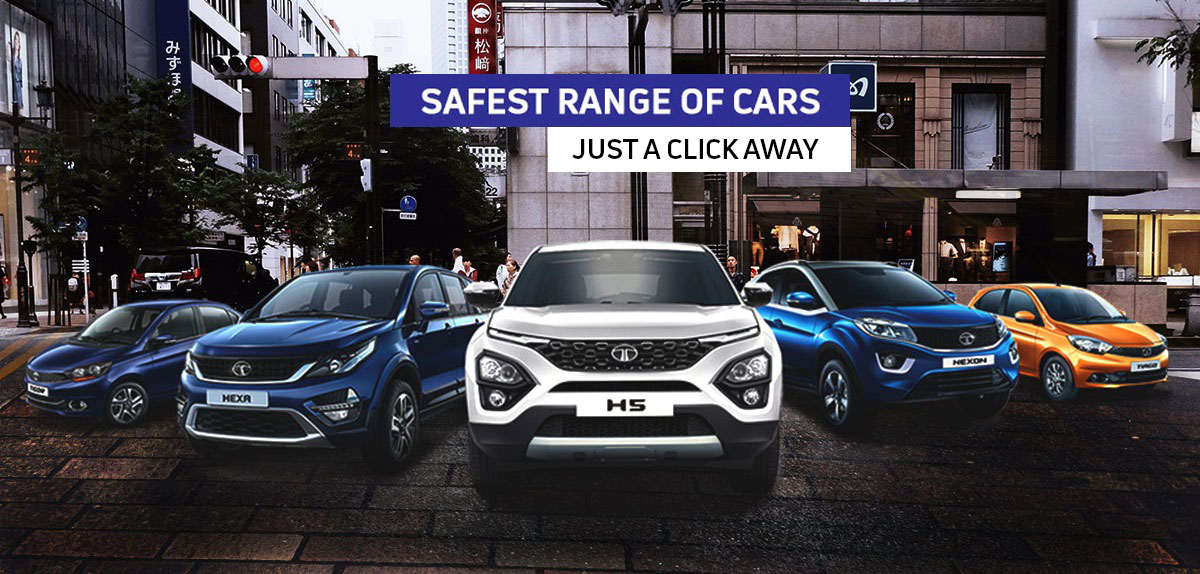
The first-of-its-kind digital sales platform in the Nepali automotive landscape will allow consumers to browse and explore Tata Motors’ passenger vehicles, request a test drive, submit loan documentation, and book vehicles online. The nominal booking amount of Rs 10,000 can be paid via mobile banking or Fonepay.
Once on the website, buyers will have to go through a four-step process to buy the car of their choice. The first step is to explore the range of Tata passenger cars in the market. Following this, they will have to select their preferred model, color, and variant, and pay the booking amount. After that, a sales representative will get back to the buyer and explain the available financing options to facilitate the buying process. The fourth and final step is to choose a preferred location for vehicle delivery.
HH Bajaj’s Online Sales Platform

HH Bajaj has announced a new initiative to make the buying processes easy for customers in the wake of the Covid-19 pandemic. The highest-selling two-wheeler brand in the country has officially revealed a new online platform to give its customers a future retail experience.
Customers can book a Bajaj motorcycle of their choice by simply logging on to the website. After the selection is made, the buyer has to pay a token amount of Rs 2,000 either through eSewa, FonePay, or Connect IPS. The amount will be reduced in the final price of the motorcycle. The platform also allows buyers to enquire about the product, browse specifications, and read reviews.
Moreover, the company has introduced a post-lockdown offer under which it’s providing a sure-shot cash discount of Rs 12,000, zero percent interest on 50 percent down payment, or 20 percent down-payment with interest charges, for new buyers.
TVS Online Sales Service Platform
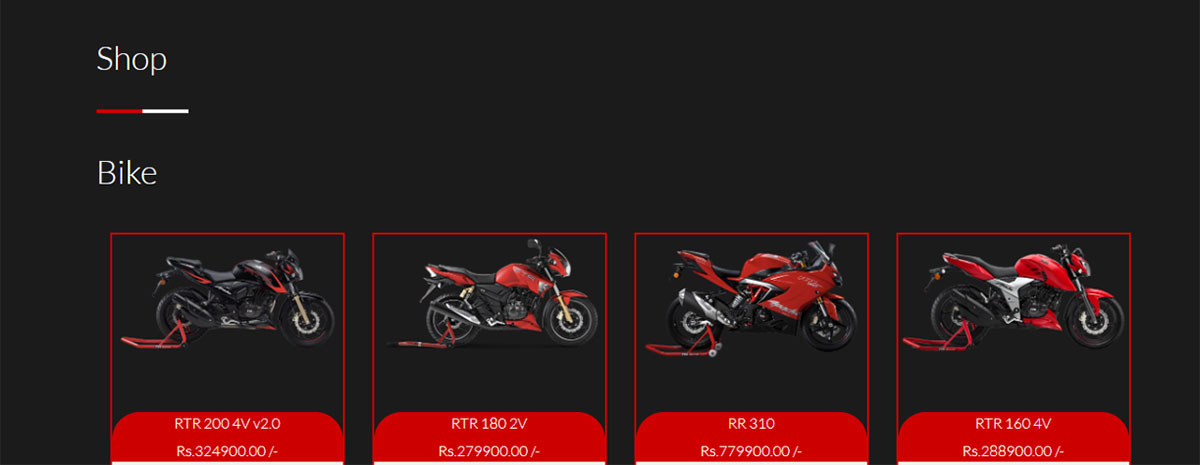
Similarly, Jagdamba Motors Pvt. Ltd Nepal has launched an integrated online sales platform for all its bikes and scooters at tvsnepal.com/shop. Users can find all the purchase-related information on the site, which allows them a glimpse of the features, financial and other aspects of the vehicle, making the experience as transparent and real as possible. The system guides the customer in the buying process. The ordered vehicle will be delivered to customer address. Also, TVS is planning to operate its showroom and other service-center services in the near future by maintaining proper physical distancing.
Expected new launches post-lockdown: Part II
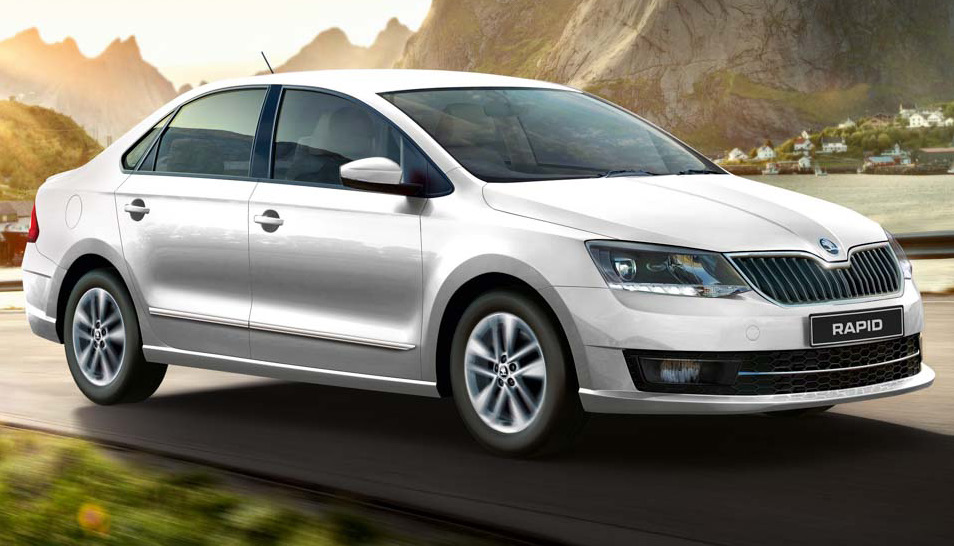
In Skoda’s new Rapid 1.0-liter suit, most changes will be seen on the powertrain. The new BS6 model will only have a 1.0-liter petrol option that produces nearly 108 bhp and 175 Nm peak torque. The transmission will also be similar to the Vento that is a six-speed manual and optional six-speed torque converter automatic gearbox. The BS6 Skoda Rapid 1.0 TSI will have mild cosmetic tweaks to distinguish it from its predecessor.
The sedan will now feature a new touch screen infotainment system, with trending features like climate control, engine start-stop button, auto headlamp and wipers, etc. The safety net will include multiple airbags, ABS with EBD, parking sensors, engine immobilizer, crash sensor, hill assist, and more. The new BS6 model is expected to come in new colour options. When it does, the Rapid 1.0 TSI will rival the likes of the Suzuki Ciaz, Honda City, Volkswagen Vento, and the Hyundai Verna
Skoda Karoq
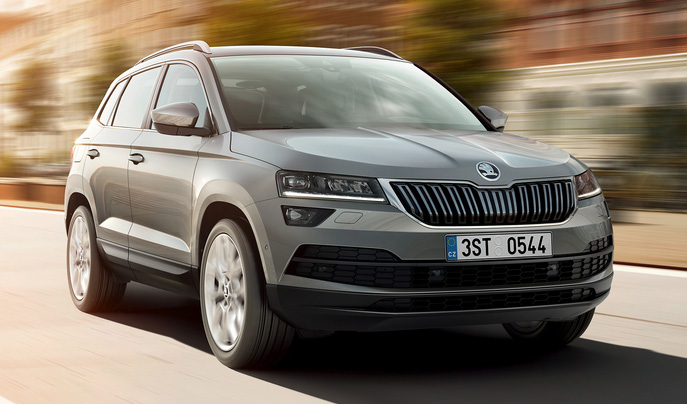
Along with the new Rapid, Skoda will also be launching the Karoq SUV. The Karoq will be offered with a BS6-compliant 1.5-liter TSI engine that develops 150 bhp and 250 Nm. Transmission options include a 6-speed manual and a 7-speed DSG. Features in the Karoq include Android Auto and Apple CarPlay, wireless charging, connected car technology, and powered front seats, ambient lighting, cruise control, 18-inch dual-tone alloy wheels, automatic headlamps and wipers, dual-zone climate control, as well as a panoramic sunroof. Safety features include Electronic Stability Control (ESC), ABS with EBD, front and rear parking sensors, up to nine airbags, ISOFIX child seat anchorages, electronic stability program, traction control, and more.
Jeep Compass 9-Speed Automatic
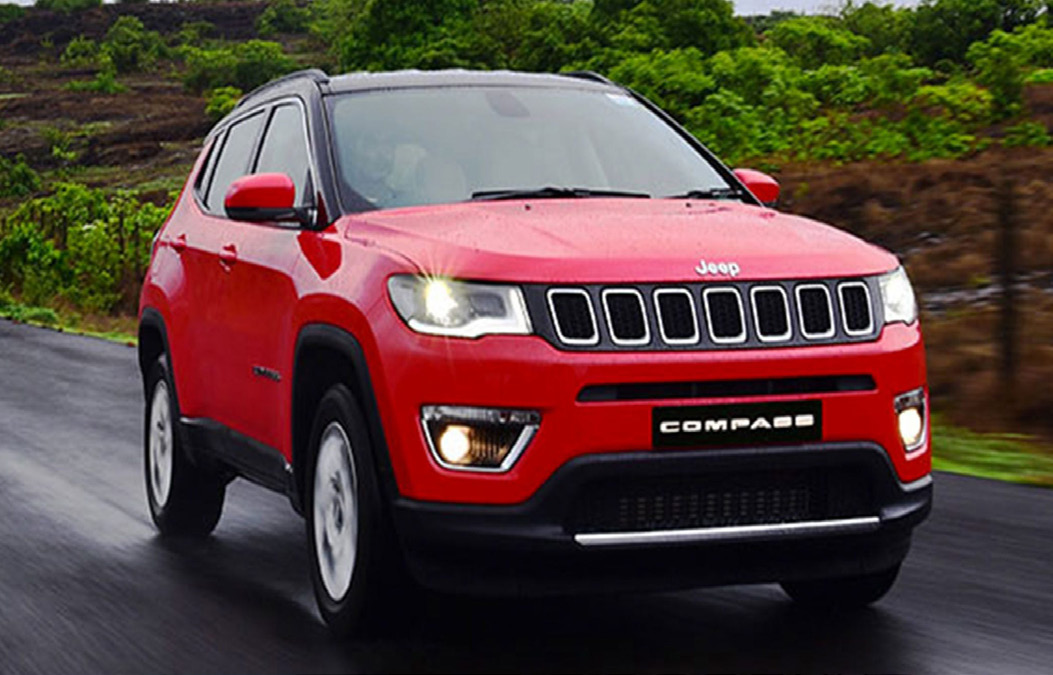
Jeep Compass created a big buzz when it was launched in Nepal. Previously, the diesel-auto combo could only be had in the SUV’s top-spec Trailhawk edition. Now, though, Jeep will be offering this sought-after combo in the base Longitude and top-spec Limited Plus variants as well. The powertrain on both variants remains the same 2.0-liter diesel engine tuned to meet BS6 emission norms, paired to a 9-speed automatic transmission that makes 173 bhp and 350 Nm of peak torque. Jeep has even introduced more tech on the Longitude variant of the Compass, including cruise control, dual-zone air conditioning, two-tone interiors, passive keyless entry, and push-button start.
The top-spec Limited Plus variant also has cruise control. The Longitude version comes with standard features such as 17-inch alloys, safety aids such as anti-lock braking system (ABS), electronic stability control (ESC), traction control (TC), hill start assist (HSA), disc brakes on all four wheels, among others. The top-of-the-line Limited Plus trim comes with sunroof, auto headlamps, rain sensitive wipers, six airbags, and 18-inch alloy wheels.
Volkswagen Polo & Vento TSI
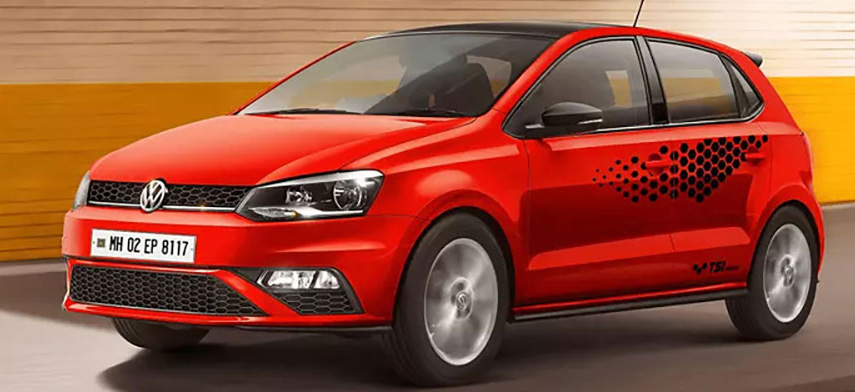
The Polo and Vento have been among the best-selling cars from the Volkswagen stable since their introduction in India and Nepal, and the brand recently introduced the BS6 lineup across the two carlines. Now the company will launch the TSI variants of the Polo and the Vento. These variants will be powered by the 1.0l TSI BS6 engine and be mated to a new 6-speed manual transmission with a peak power of 110 bhp, delivering 175 Nm of torque. The TSI editions of the two cars sport a stylish honeycomb grille, sporty body side graphics, and bold TSI badge across the passenger doors, plus stunning black ORVM and, glossy black roof & spoilers.
Jeep Grand Cherokee
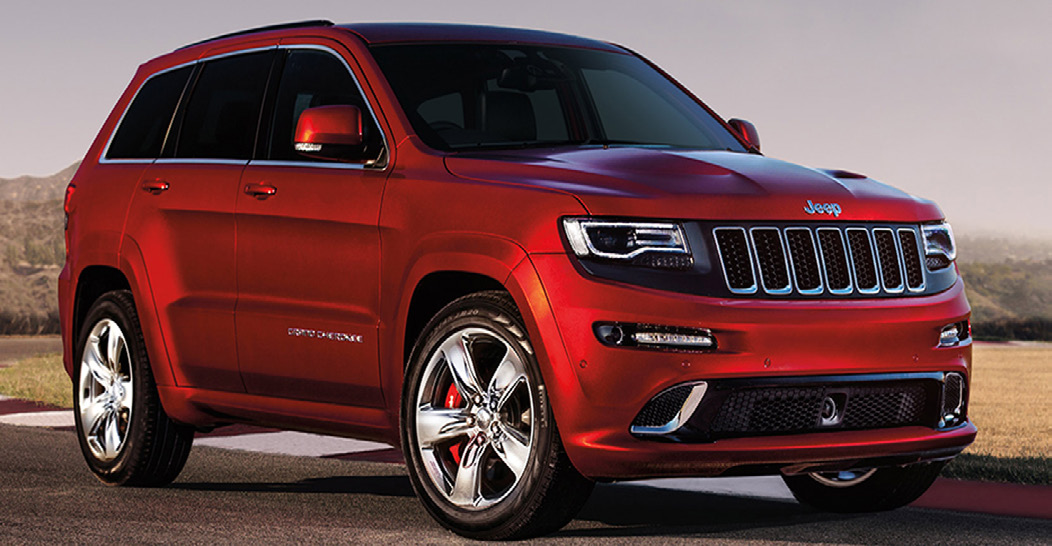
The Grand Cherokee is a five-passenger midsize SUV that carries signature Jeep design language and boasts a wide range of advanced high-end technologies that enable the SUV to go anywhere. The Grand Cherokee is powered by a 3.0L V6 Pentastar engine with stop and start technology and is mated to an eight-speed automatic transmission with paddle shifters. The ‘Gen II’ automatic transmission on the Grand Cherokee is engineered to deliver improved overall performance.
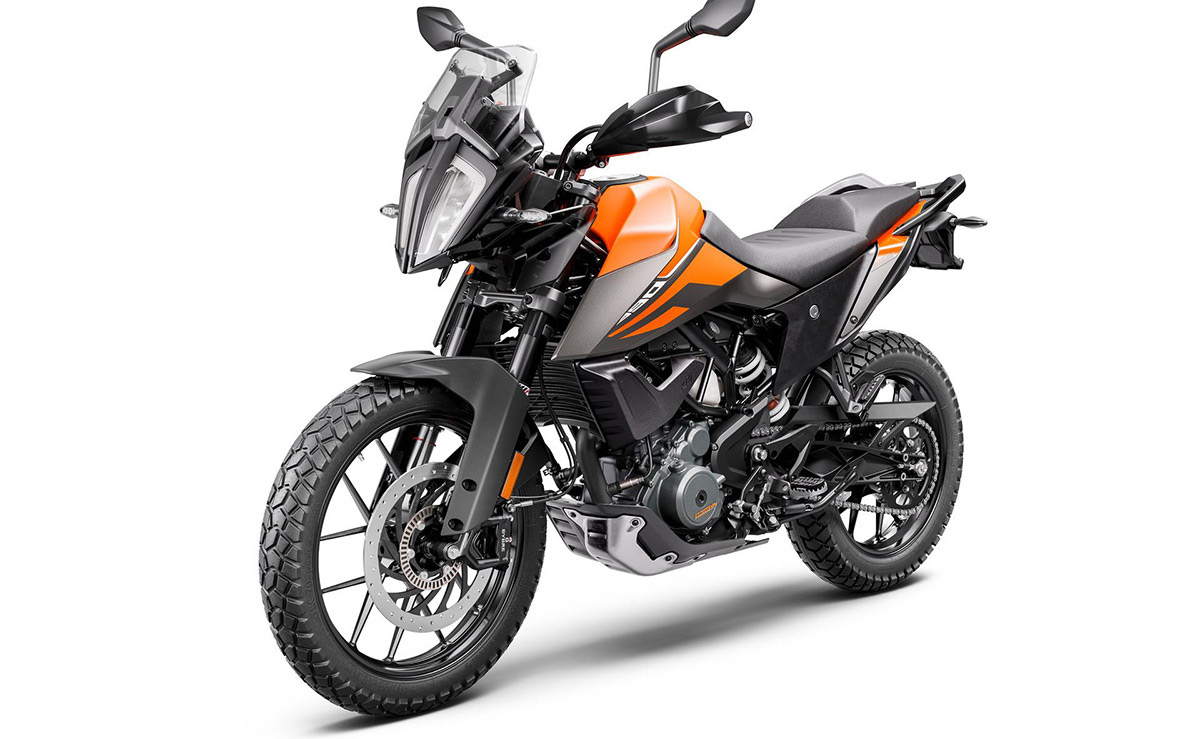
The long wait is coming to an end with KTM’s answer to the lightweight ADV segment all set to debut in the Nepali market. The 390 Adventure is quite a looker with styling genes inspired by its elder sibling, the 790 Adventure. It gets a chassis-mounted pincer-type LED headlight unit, LED taillights, a TFT console, sharp tank shrouds, raised handlebars, a large and flat seat, and a generous 14.5-liter fuel tank.
The 390 Adventure is quintessentially an off-road version of the 390 Duke, but catered more to touring and light offroading. It uses the same 373.2cc single-cylinder engine that makes 44hp of power at 9,000rpm and 37 Nm at 7,000rpm. The 390 Adventure’s engine also gets features such as ride-by-wire EFI, traction control, a slipper clutch, and a counter-balancer. This engine has been tuned to meet Euro 5/BS6 emission regulations.
In addition to a trellis frame and subframe, the 390 Adventure gets a die-cast open-lattice swingarm carried forward from the 790 and big V-twin KTM ADV motorcycles. In terms of suspension, the 390 Adventure has WP Apex units at both ends—a 43mm USD fork with compression and rebound adjustability and a rear mono-shock that can be adjusted for pre-load and rebound.
Nepal’s post-pandemic public transport
Most Nepalis rely on public transport to get around. Simply put, they don’t have the money to buy a personal mode of transport, and as such are compelled to take public transport.
Now, the atrocity that is the public transport system of Nepal is common knowledge: It is unsafe, unmanaged, and uncivilized. The syndicates have the system in their grip and there is little anyone can do about it.
Covid-19 has changed our attitude to public transport. But it is still an integral part of today’s urban world. People need to get around. Currently, all forms of public transport have halted due to the pandemic. But once some form of normalcy returns, public transport will resume. Further, the syndicates are going to put pressure on the authorities to recommence public transport as soon as possible. It will then bring forth a whole new level of risk of contagion.
Stuffing a vehicle above its capacity is common on Nepali roads, compromising the vehicles’ ability (braking, maneuvering, etc.), especially as most drivers insist on driving like they’re collecting coins on the roads to get a new high score. This has also been the culprit in hundreds, nay thousands, of fatal accidents.
In addition, the Covid-19 outbreak has underlined the problem of hygiene the public transport presents. Cramming people shoulder-to-shoulder (and that’s putting it gently) in a filthy vehicle has always been unhygienic; the coronavirus has only exacerbated the situation. But does that mean we can shut down public transport? Of course not. What it does entail is working out safe travel methods.
The governing bodies have made several attempts to curb these anomalies in public transport, but the efforts have always fallen flat. However, undertaking and enforcing safety measures has never been more important. Now, as ironic as it may sound, this godawful virus might just be the defining moment to transform the country’s public transport.
This pandemic has made people aware of the perils of contagious viruses. It has instilled a sense of fear, which hopefully results in precautions for one’s own health. Consequently, this fear might nudge people to adopt safer measures while traveling via public transport. As public transport is a necessity, it is the government’s job to make sweeping adjustments to ensure public safety, and this is the perfect opportunity to put in place stringent reforms.
There are several measures that can be, and need to be, implemented. First, a strong and managed system is the need of the hour. Crowding around a bus station (or the side of the road) to catch a bus and piling in till it’s so crammed that you can’t scratch your nose is not going to fly. The government needs to immediately invest in infrastructure to allow people to use public transport like civilized folks. The main problem is that there aren’t enough vehicles to meet the demand. At this moment, budget restrictions are certain to be a problem. However, in the long run, it is definitely something deserving attention.
According to the World Bank, governments should begin drafting recovery measures to ensure financial sustainability of transport companies, particularly as the pandemic pushes the global economy into a slowdown. And, the government should immediately kick-start this process. Hence it’s important to assess the capacity of public transport under different scenarios.
For now, what are the immediate measures people can take when public transport resumes? On an individual level, they can adopt safety measures when travelling. This needs to be strictly reinforced by authorities and vehicle operators. Here are a few things that can be done:
- We can have bus ticket systems or, even better, e-tickets. The goal is to reduce points of contact. Rwanda has invested heavily in the digitization of public transport. Cashless bus fare payment system has helped public transport companies cut costs there.
- Public transport should operate at 30-50 percent capacity, depending on demand. Similarly, there can be a timecard system to ease loading and unloading during rush hours.
- Front-door boarding should be closed to avoid unwanted contact with the driver. In case a vehicle has only one boarding area, the driver area should be separated with screens or shields.
- There should be social distancing markers inside vehicles and bus stops to ensure adequate spacing.
- Proper ventilation in the vehicle should be ensured at all times and passengers encouraged to use windows and fans.
- Staffs should be reminded of basic personal hygiene rules.
- Designated stops need to be diligently used, both by the vehicles as well as the passengers. This means everyone will have to wait patiently and avoid crowding.
- All passengers should be wearing face masks/covers while getting on the bus and during the entire travel.
- Only people with confirmed tickets should be allowed in the vehicles.
- All passengers should be given hand sanitizers at entry and exit.
- During boarding and travel, passengers should practice social distancing. They wait for the next service if the vehicle is full.
- All vehicles need to be subject to regular and frequent cleaning and disinfection, diligently enforced by the authorities and vehicle operators. Ensure regular cleaning and disinfection of frequently touched surfaces such as handles and rails.
- Is your journey necessary? If you’re unwell or show signs of sickness, it is a good idea to avoid public vehicles.
- Taxis (and other vehicles) can also think about introducing glass screens to separate drivers and passengers.
- The authorities should put infographics in waiting areas and bus stops, explaining the importance of physical distancing, and hygiene.
All said and done, it is important to reiterate the perils of restarting public transport too soon and without right precautions. It is, nonetheless, a vital component of urban areas. At the moment, all we can do is hope that the authorities take steps to ensure the safety of the civilians and to keep our cities running.
New budget offers no respite for Nepali auto industry
Although many of us expected the new budget to uplift the mood of the auto sector and support the emergence of electric vehicles, that didn’t quiet happen, did it now? Here is how the industry reacted to the budget. No, what follows is not much to cheer about.
Karan Chaudhary, Executive Director, CG Motocorp (Suzuki cars) 
We were hoping something concrete for the revival of the auto industry. Yet the government has doubled down on its earlier stand that vehicles are non-essential commodities. Instead of promoting EVs, duties on them have further risen. The budget has discourages their growth. Further, there has been no respite in credit limitation in auto financing. Yes, the duty structure in the internal combustion engine has not been changed, but this is too little too late.
While there are a few optimistic points, such as the removal of excise duty on spare parts and emphasis on auto assembly, overall, the measures fall woefully short of expectations. Because of this, the sector is unlikely to generate enough jobs and earning opportunities to make a significant contribution to the country’s economic revival. The automobile sector is clearly unimpressed by this budget.
Anish Lamichhane, AGM, KIA Motors Nepal

For a company like KIA Motors that has played a vital role in setting up an EV-centric ecosystem in the country, this budget is nothing but a disappointment. It has killed the aspirations of thousands of people who wanted to own an EV, something the government had been promoting of late. At a time the focus should have been on lifting the automotive sector and supporting the growth of electric cars, the new budget has pushed us deeper into debt and heralded an environmental crisis. Instead of increasing our self-reliance on energy, the government has worsened our dependence on petroleum.
Deepak Agrawal, VP, Jagdamba Motors Pvt. Ltd (TVS) 
We expected the budget to address the grievances of the automobile sector. At a time the auto industry was already reeling under the pressure of the Covid-19 lockdown, the new budget has further deepened our woes. The government has done nothing to revamp duty structure, bank interest, or offered any kind of subsidies. Further, the shocking decision to increase the tax on EVs has made us lose faith in the government.
The government policies aren’t practical. These poorly drafted policies have hindered our investment plans time and again. For example, we have issues with the government’s CKD (Completely Knocked Down) policy. Although the government announced 50 percent discount on excise duties for CKD products, the discount was reduced to 25 percent after it came into operation. Hence, we request all concerned to draft long-term policies, sustainable policies.
Mahesh Kumar M, GM, United Traders Syndicate (Toyota) 
The industry anticipated innovative measures. However, the government seems to have no interest in reviving the industry. And out of nowhere, it increased the duties on EVs. This came at a time when the industry was growing so rapidly. On the one hand, the government is trying to promote the growth of EVs in Nepal. On the other, it has drastically increased duties on EVs. The huge gap in revenues coming from EVs and fossil-fuel-powered vehicles may be the reason for this. Although the taxation for ICEs hasn’t increased, most of our hopes have been dashed.
Kiran Acharya, Head-Marketing, IME Motors

To mitigate the risks associated with Covid-19, the government has put forward many plans and policies, which is definitely a welcome step. But it should have skipped many yet-to-be implemented programs from last year instead of re-allocating funds for them.
Now, coming to the auto sector, this has been the most criticized budget. If you look at earlier trends, the government has never lent us any support, and the same is true this year as well. Our finance minister has increased taxes on electric cars, hitting the industry hard. Many of us expected this budget would be a dramatic departure from the past and would introduce bold reforms in petroleum dependence, renewable energy, and agriculture, etc., but it has failed to address any of these concerns.
Nawaraj Koirala, Marketing Manager, TVS 
The budget is a very regressive one, with increases in taxes on EVs, and no relief package for the auto industry. The auto sector, which is in a crisis, is now definitely headed for a prolonged slump. I expected the budget to support the emergence of electric vehicles, but no. The Ministry of Energy had issued a white paper two years ago focusing on increasing the import of electric vehicles by 50 percent. I wonder where that plan has now gone. This is not a budget for our sustainable future.
A mighty blow to Nepal’s EV industry
While inaugurating the battery-operated public buses of Sajha Yatayat in 2018, Prime Minister KP Sharma Oli had also announced the National Action Plan for Electric Mobility. The goal was to increase countrywide adoption of electric transport by at least 20 percent in the next two years. Two years on, the ambitious plan seems like a distant dream.
When Finance Minister Yubaraj Khatiwada presented the new budget, the auto industry expected the government to announce measures to revive it. To the contrary, the finance minister presented a contentious policy that now puts the EV dealers in a difficult spot.
According to the new budget, excise duty on electric cars has now been raised to a range of 40-60 percent, depending on their peak power. Electric cars with peak power ranging between 50-100kW will now face excise duty of 40 percent, those between 100-150kW, 50 percent, and those in the 150-200kW range, 60 percent. Earlier it was only 10 percent, regardless of the peak output. To make matters worse, an extra 80 percent customs duty (of which 50 percent will be reimbursed) has been slapped. This will further be subjected to 13 percent VAT and a 5 percent road toll.
Until now, electric cars had to pay only 28 percent in total taxes, which has now gone up to a massive 120-140 percent. Although the dealers are yet to take their call on the new pricing, it is rumored that the prices may increase two to three folds. The retail price of conventional petrol and diesel cars reaches 261 percent above cost price. The onus is on the government to provide a convincing justification for such a shocking measure as this is a ‘slap on the face’ of consumers and businesses that have decided to go electric.
Though the EV segment is still in its infancy, its market share was projected to rise exponentially. Low cost of ownership and subsidies incentivized EV importers in Nepal. This was further complemented by the government’s willingness to set up charging infrastructures across the public spectrum. Although these short-term policies accelerated the adoption of EVs, the government’s failure to devise a long-term strategy to solve revenue and taxation issues has put a dampener on this trend.
This is disheartening as it effectively brings the progress of electric vehicles in Nepal to a screeching halt. The increase in the purchase of premium electric vehicles had indicated a possibility of the general public accepting them as their primary mode of transport. In the long run, and assuming the infrastructure required would be established, adoption of electric vehicles would nudge the Nepal towards a cleaner and greener tomorrow.
With the automotive world making great progress in R&D, electric vehicles seemed set to be a sustainable alternative to conventional fossil fuel-driven vehicles. However, with the new budget, these development dreams will have to be shelved. Most of the effort put into creating better infrastructure for electric vehicles in Nepal will also go to waste. There is a clear dichotomy between what the government said it would do and what it actually did.
Did the rise of electric cars threaten the fuel excise revenues or did the government fall victim to excessive lobbying? Regardless, we are still hopeful about the future for electric vehicles in Nepal. There is no question of where the automotive world is headed, and the importance of a sustainable future is all too evident. One can only hope Nepal can play an instrumental role in ushering in this paradigm shift.
What next for Nepal’s auto industry?
With an increase in the number of tests, the number of Covid-19 positive cases has also been increasing rapidly. Still, these numbers don’t reflect the crippling effect the virus has had on the Nepali economy and on its people. Along with trade, tourism, and remittance, the auto industry looks headed for a sharp slump. But is there a silver lining in this dark cloud?
At first glance, it does not look all that promising. Like most other businesses in Nepal, Nepal’s automotive industry is dictated by the tunes of the Indian auto industry. So the news of a 15 percent dip in Indian car manufacturing (a 28-year low) does not bode well for us.
However, there is good news from our neighbor up north. According to reports, sales in Wuhan have reached 96 percent of what they were in the pre-lockdown period, within weeks of restrictions being lifted. There are predictions of the Indian Auto Industry taking a similar route.
The primary premise of this prediction is that people will want personal transport. Indian public transport (as in Nepal) has come to a halt, along with their ride sharing offerings like Ola and Uber. They have no mode of transport to get them from one place to another, even in an emergency. The unavailability of these services has made people think about owning a personal vehicle. Further, even after a certain normalcy is attained, there will always be the fear of getting the virus. People are thus likely to avoid a shared means of transport like public vehicles for a long time.
This lockdown has exposed the vulnerability of our dependency on public transport. It is this fear and desire for personal transport that hints at increase in vehicle sales, especially that of two-wheelers and small cars. Used or pre-owned vehicles may also see an increase in demand due to the desire to limit spending.
What about us?
But is there a possibility of a similar trend in the Nepali market? There are a few things to consider. Buying a personal mode of transport in Nepal is difficult due to the tax structure. For the majority of families, purchasing a car is likely to be the second largest investment of their lives. For many that dream is shot down to owning a motorcycle. For the vast majority of Nepalis, purchasing motorcycles and cars is a distant dream.
The economic divide in the country is stark and entrenched. Without delving too much into it, we’ll state the obvious. The people who can afford to buy a vehicle already have one, and some have several. And then there is a big economic distance between the ones who can and cannot afford to purchase.
But we cannot completely negate the possibility of an upturn in the purchase of vehicles in Nepal. There are many people who have pushed back their vehicle purchase for various reasons. There are people saving for a better model, waiting for their children to complete their SLC (SEE), or more realistically, saving money. For them, this could be the necessary push that makes them purchase a vehicle. There could also be consumers with large disposable incomes choosing to spend on vehicles rather than on outdoor activities like travel or experiential tours.
Restore the health
Herein comes the government. Covid-19 has disrupted the automotive industry at a time when it was already reeling under pressures of tight liquidity and inept governmental controls. Even before the lockdown, industry insiders were pessimistic about their growth prospects. As we are a dealer-based market, this lockdown will further increase the level of debt and choke sales.
NADA Automobiles Association of Nepal, the governing body of automobile dealers in Nepal, recently issued a six-point recommendation. It urged the government to bring a relief package to overcome the impact of the Covid-19-induced lockdown on the automobile industry. Among other suggestions were waiver of demurrage and container detention charges, extension of the period for paying bank interest installment up to six months, and introduction of a relief package. Although the automotive sector is a major contributor to the economy, the government’s clunky assessment is likely to deepen the woes of the auto dealers.
Auto dealers have been unable to sell vehicles and they face a great burden to clear their inventories. The dealers will soon face liquidity issues because of the prolonged lockdown. Also, the market remains constricted with a high taxation structure discouraging the prospective buyers. Hence a significant amount of government support is needed to improve this sector’s financial health.
According to a report by Deloitte, a prolonged truncation of consumer demand as countries work through various lockdown scenarios may spark a global recession, leading to widespread loss of consumer confidence, significantly impacting automaker revenues and profitability. In response, auto companies may choose to exit unprofitable global markets and vehicle segments.
That said, it is still difficult to foresee the economic repercussions that the Covid-19 fiasco will have on the country and on the world. For now the best we can do is to expect a positive outcome. Until then, we hope the world finds the resilience to battle this pandemic. Stay Safe.













